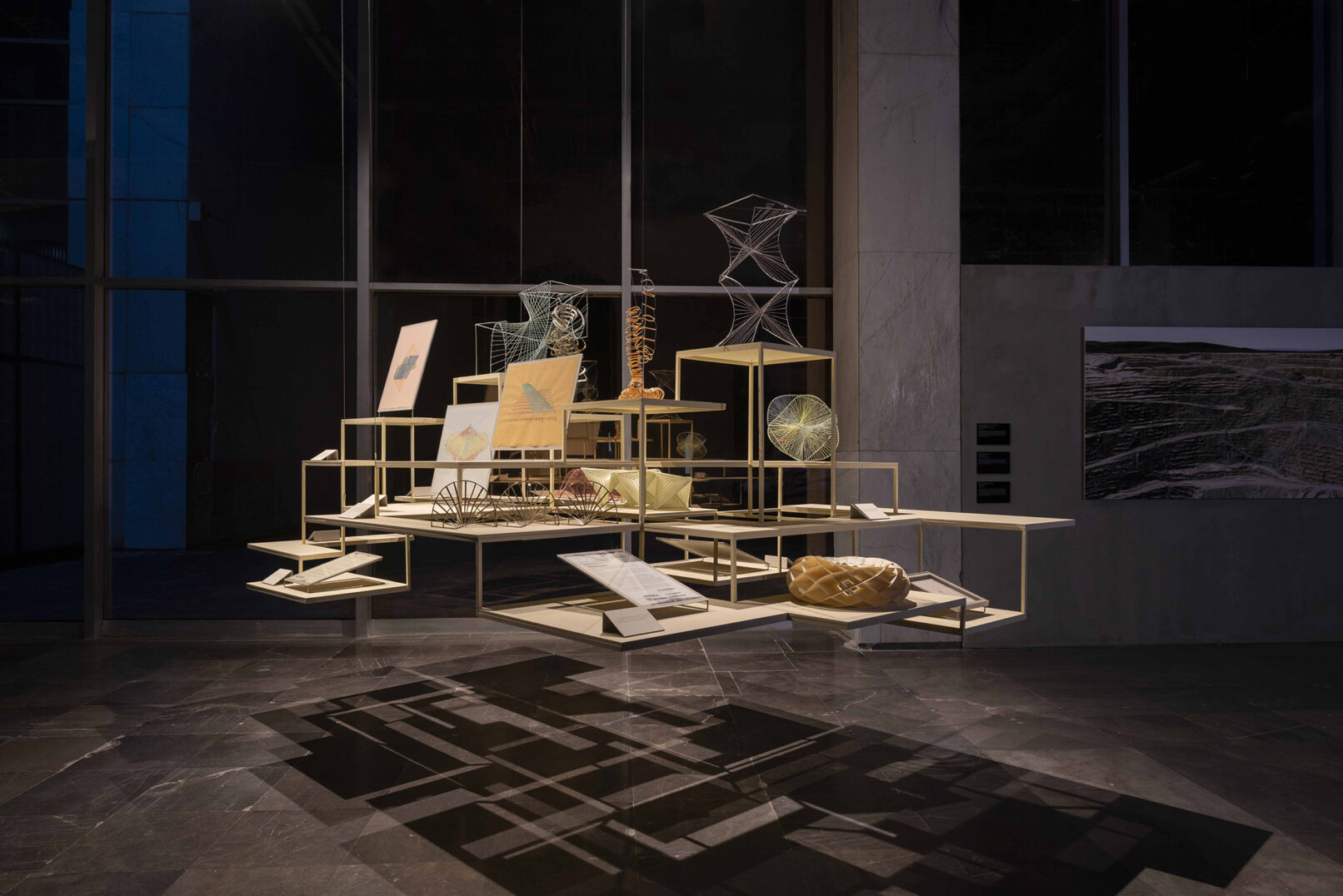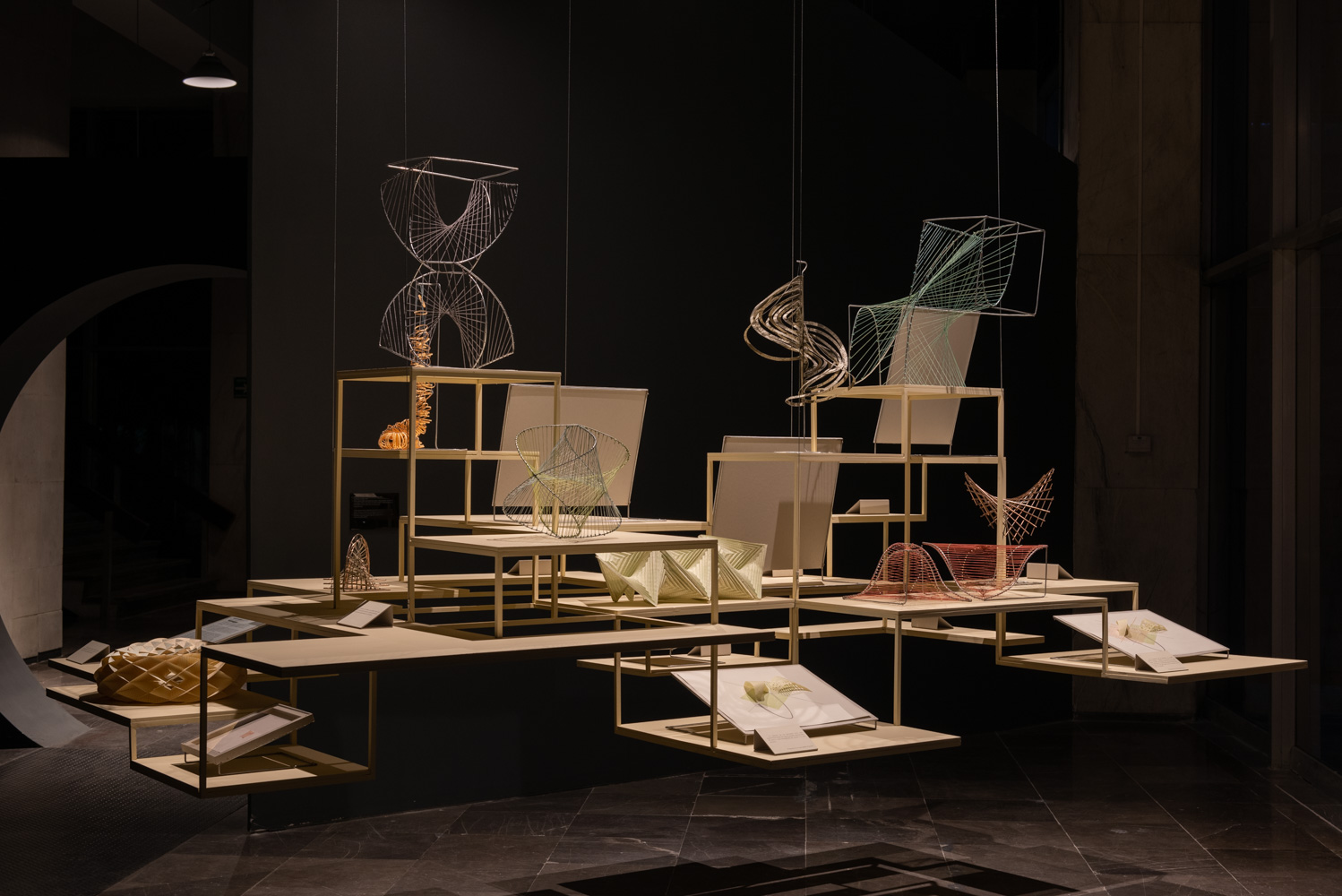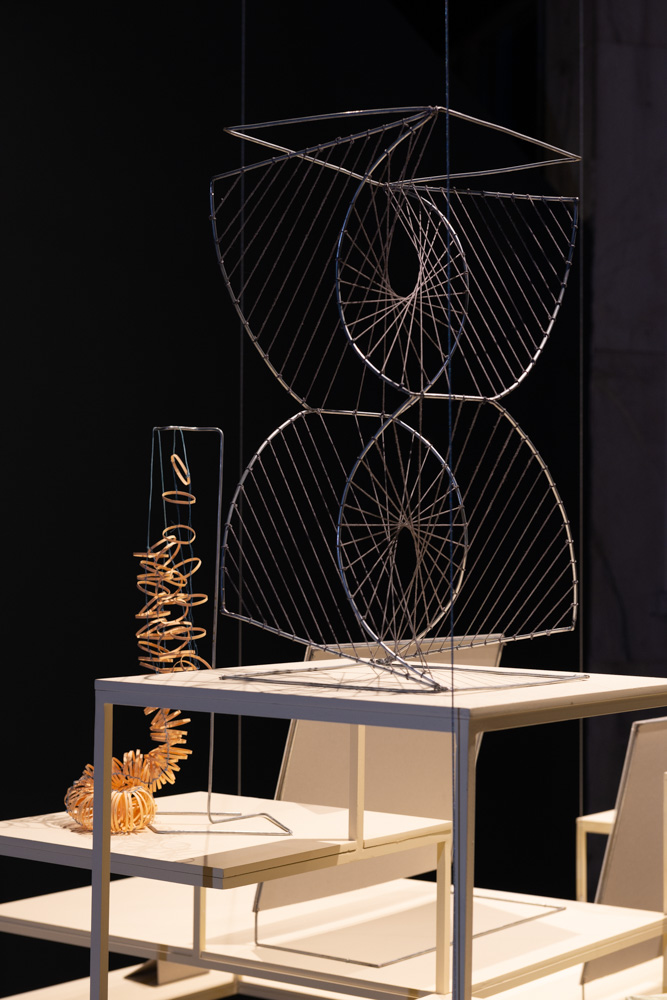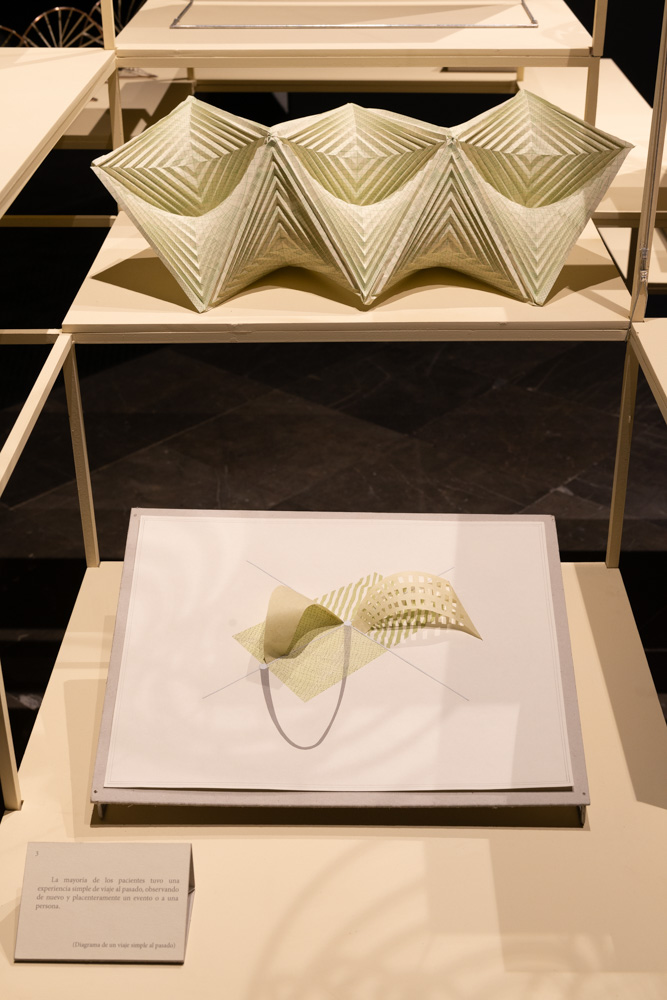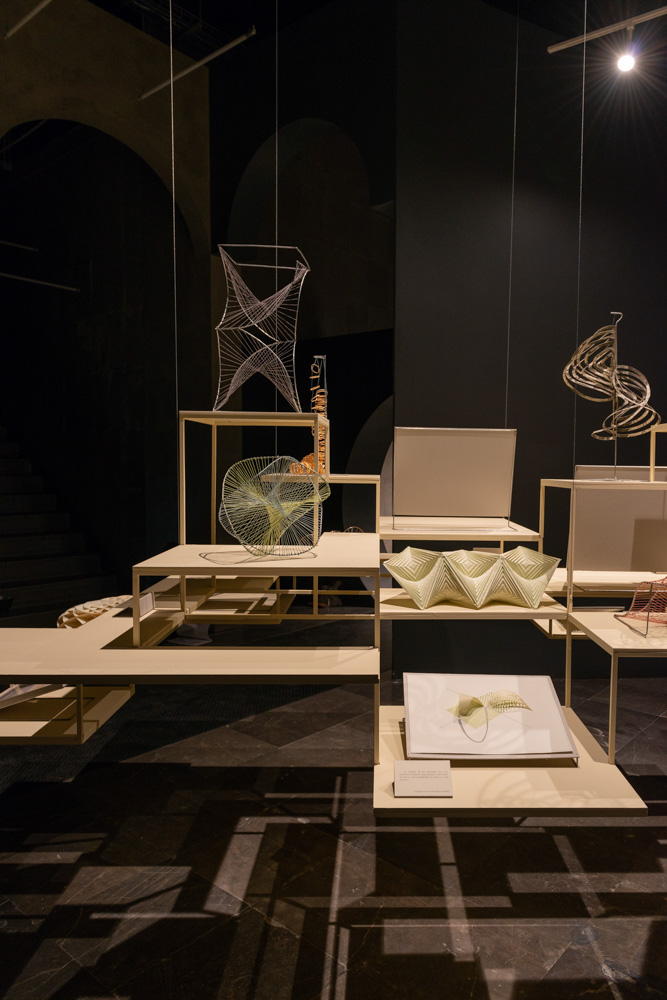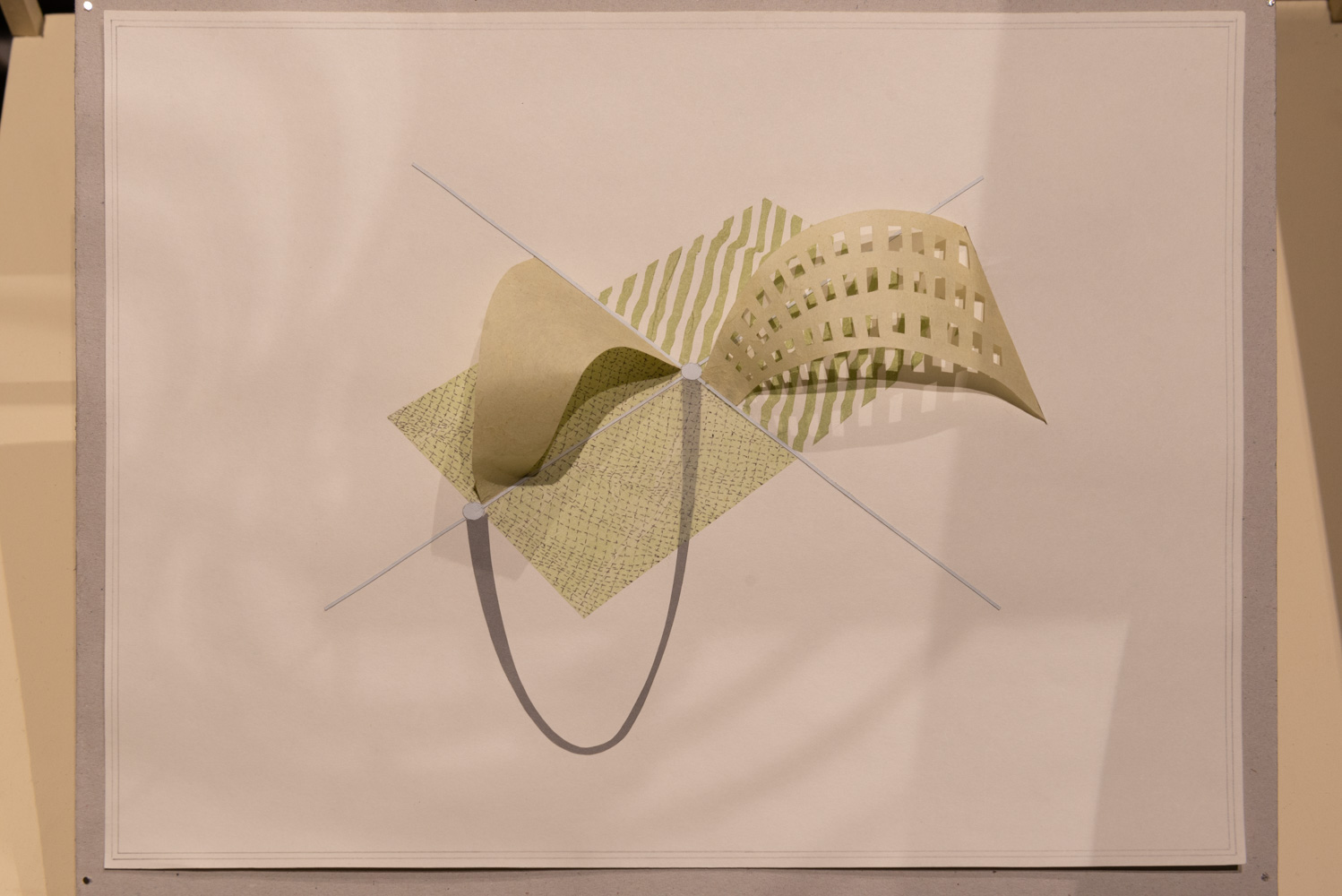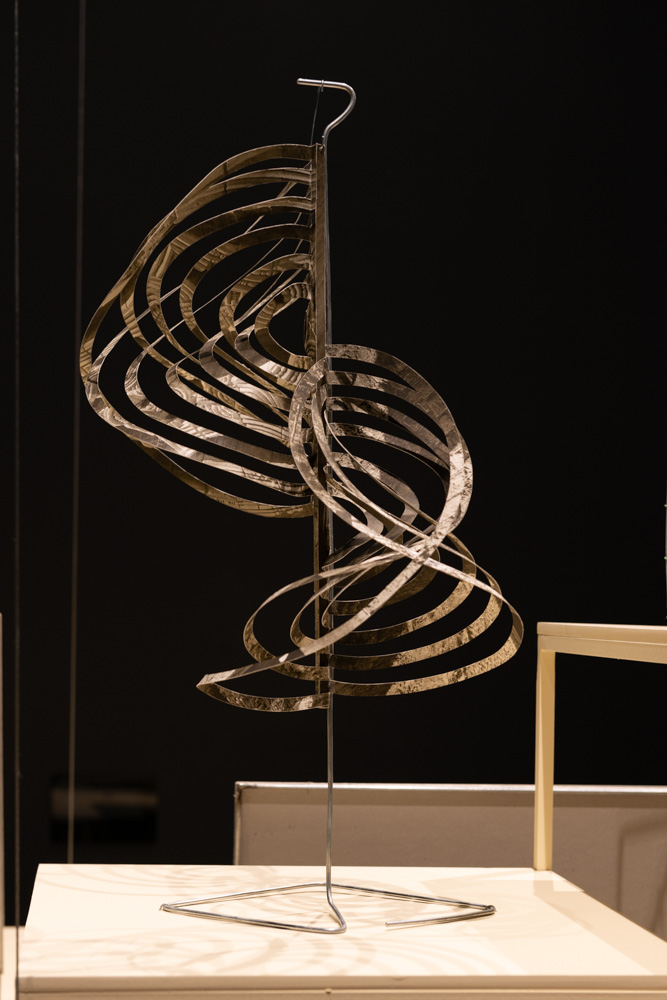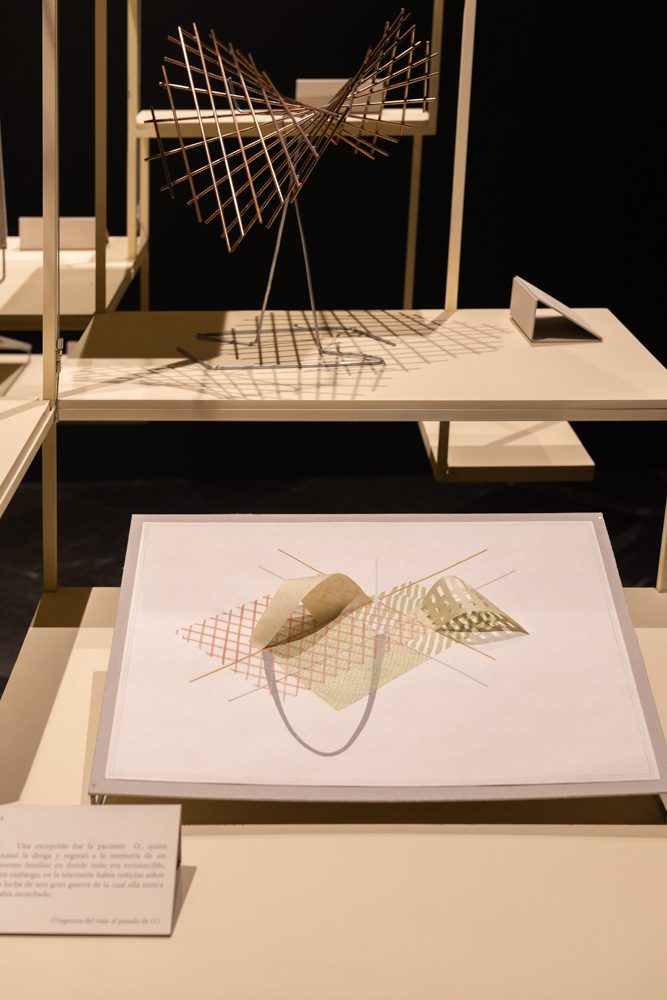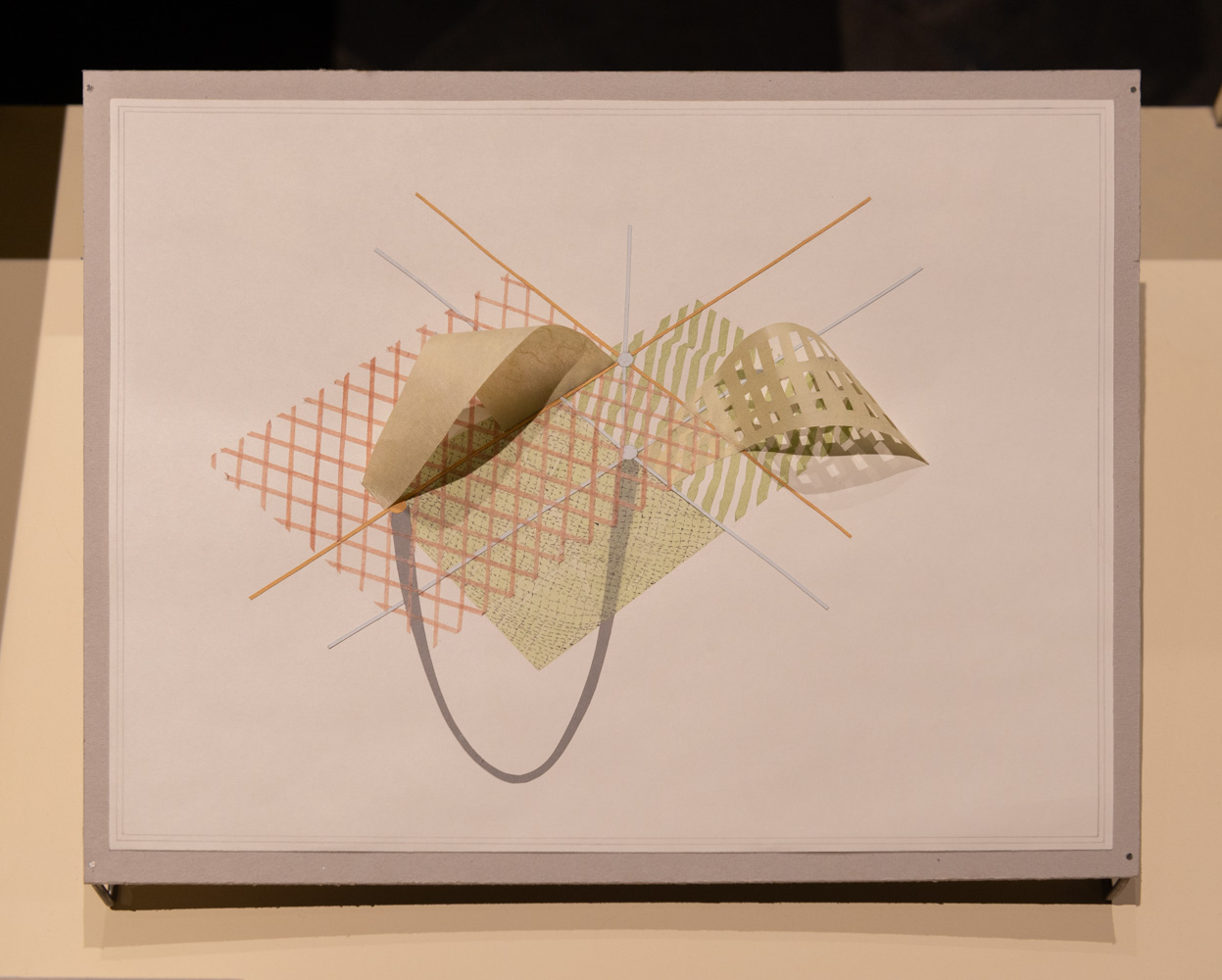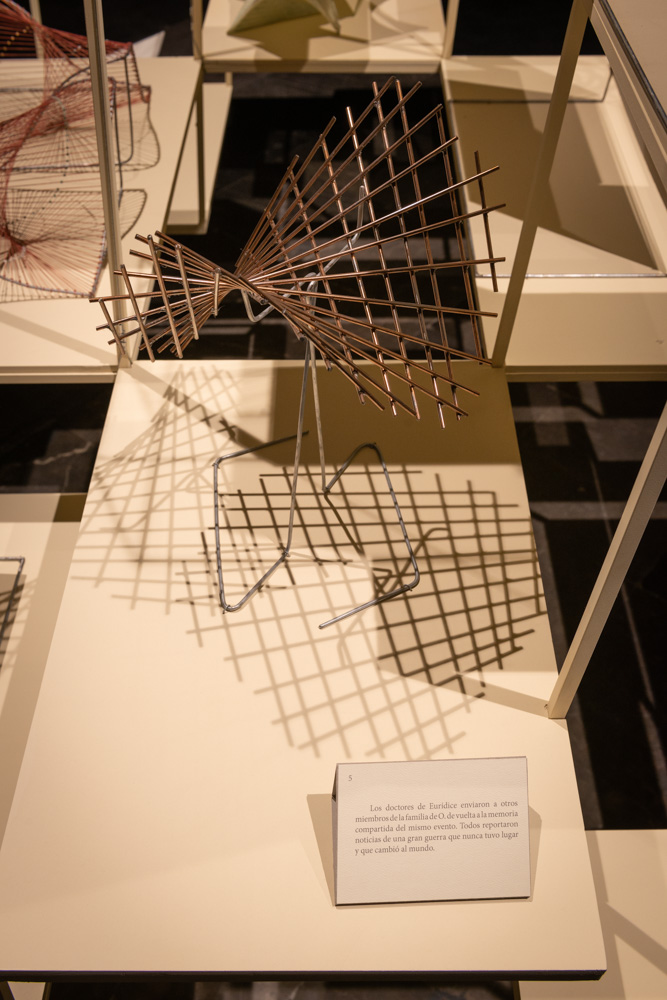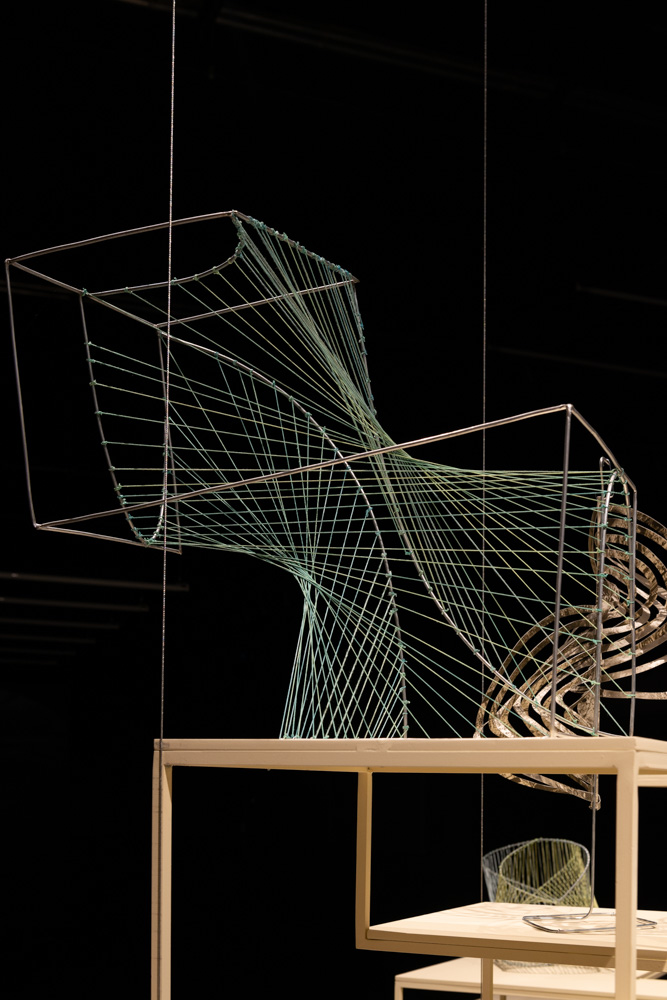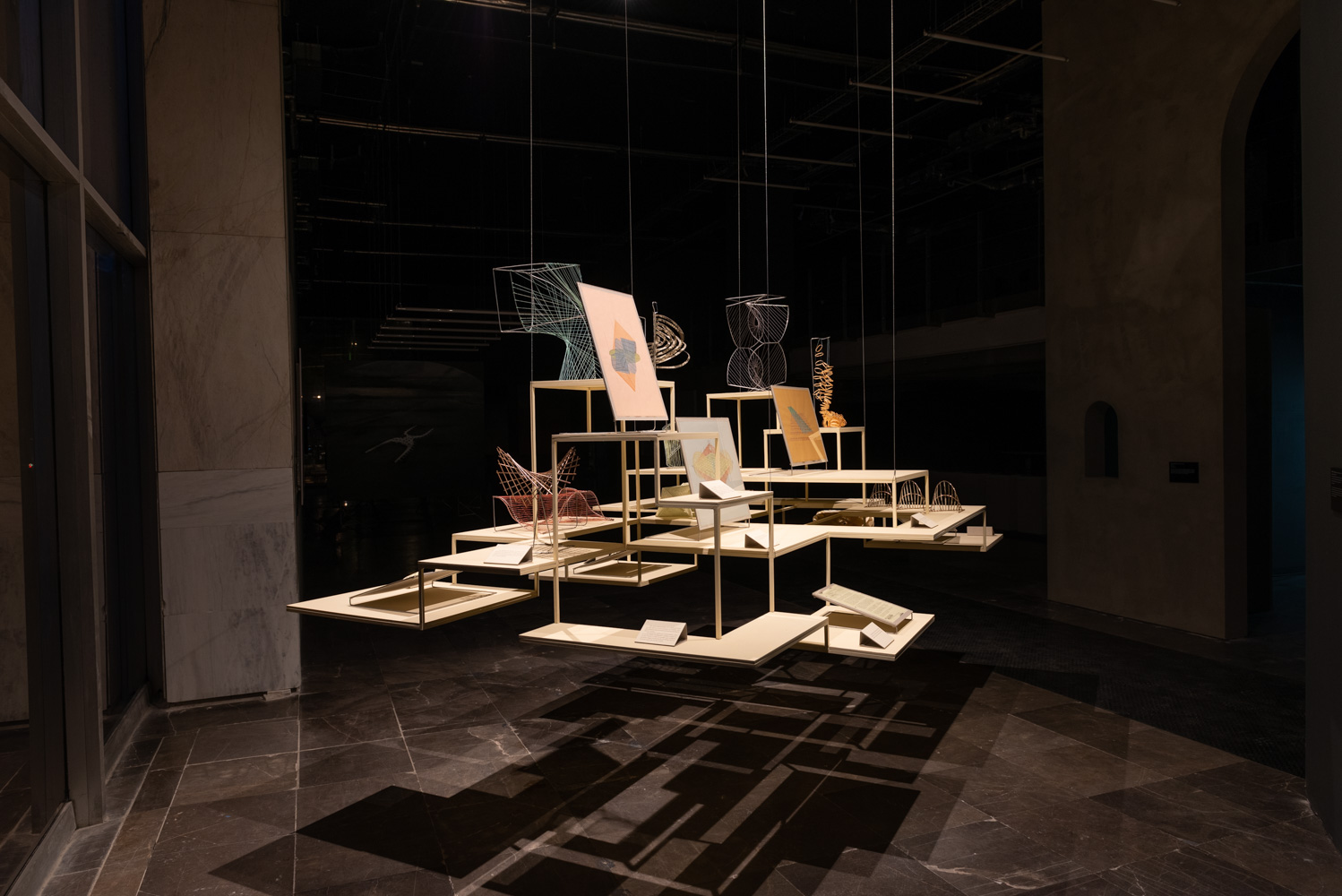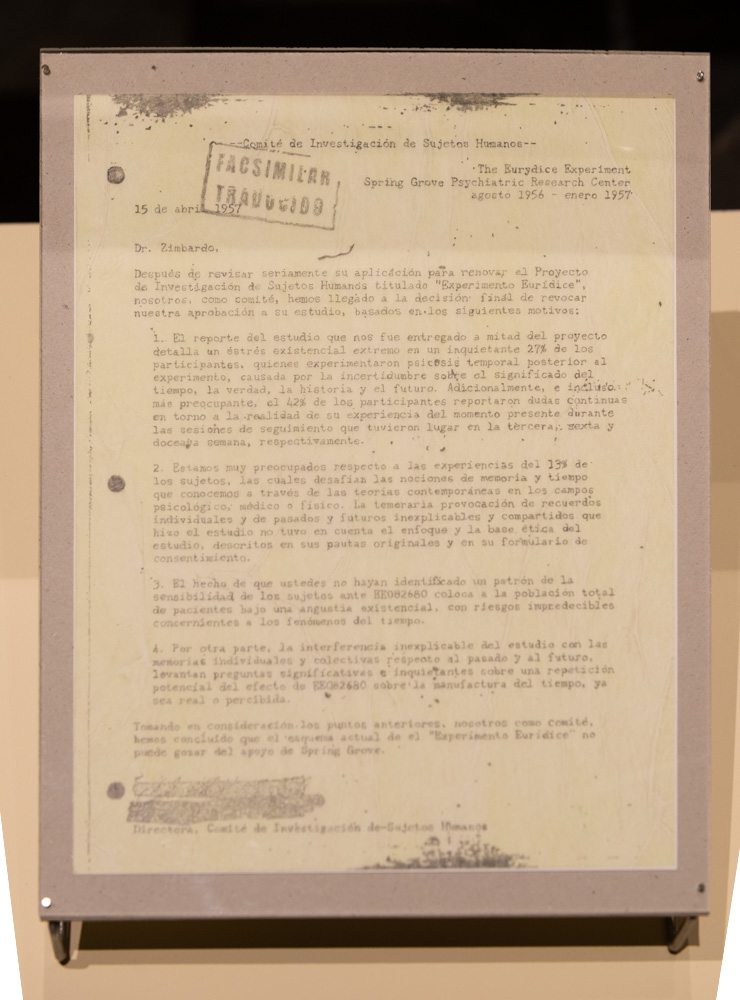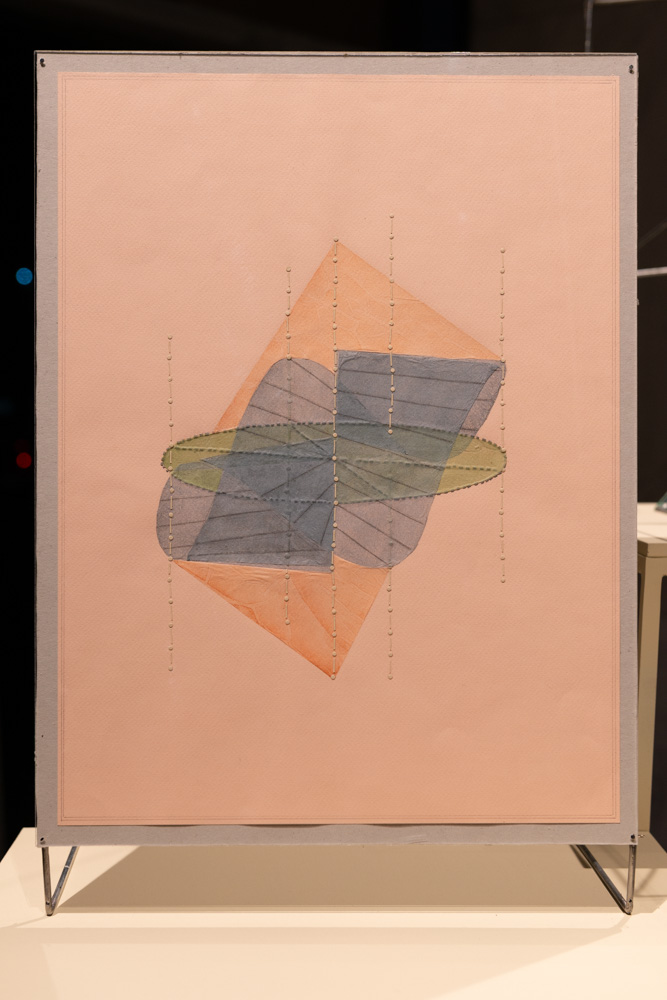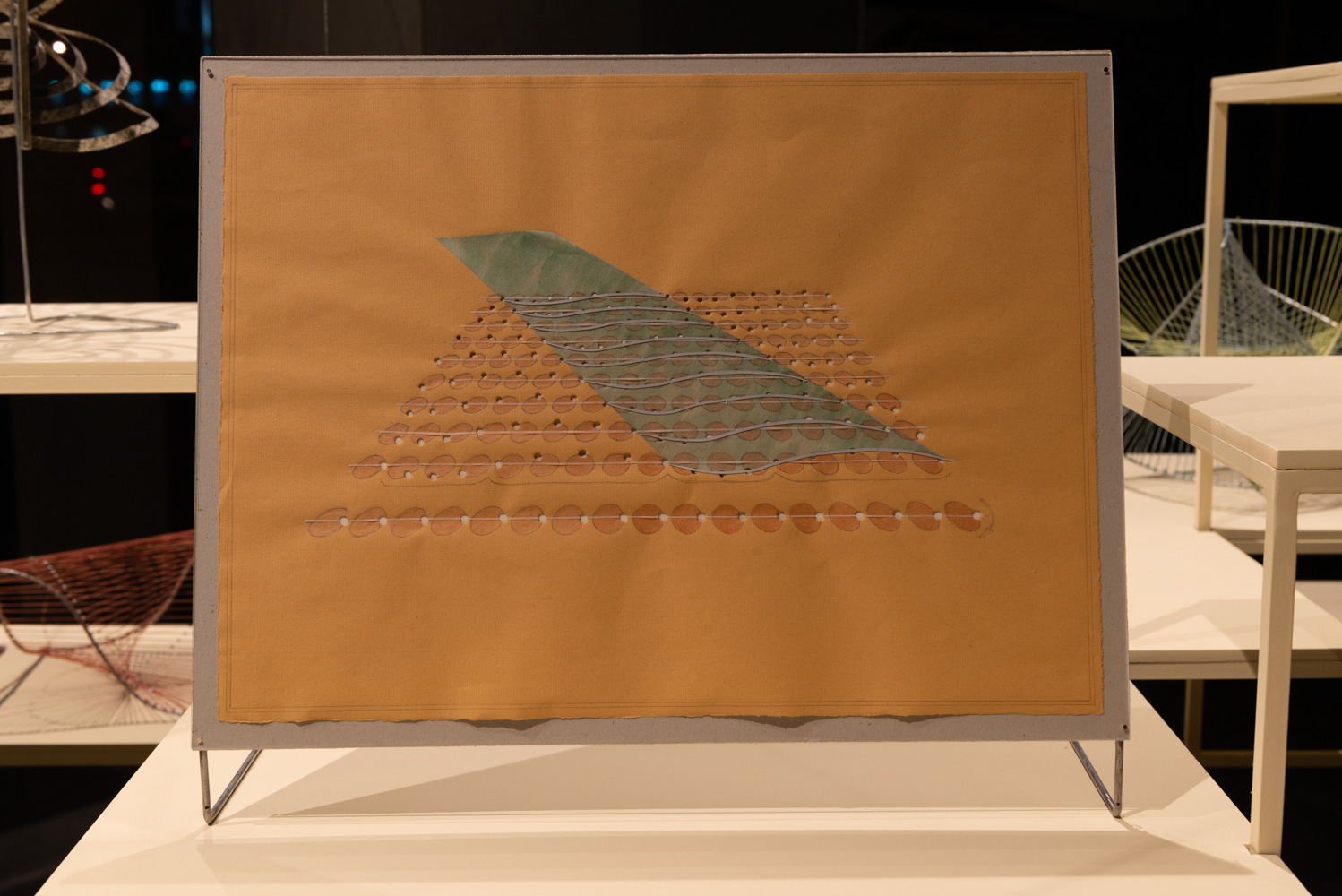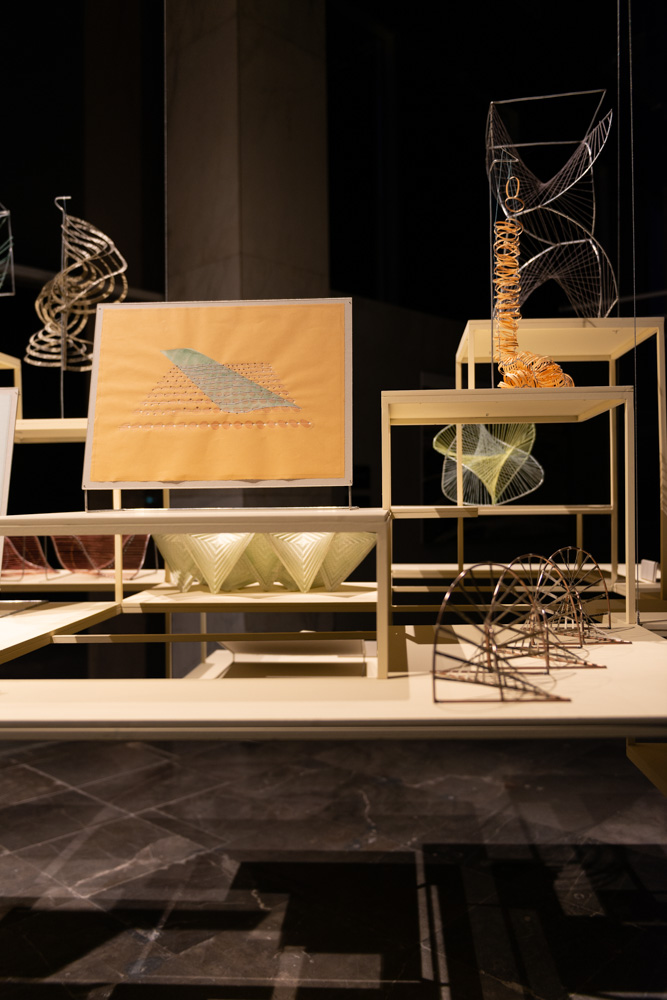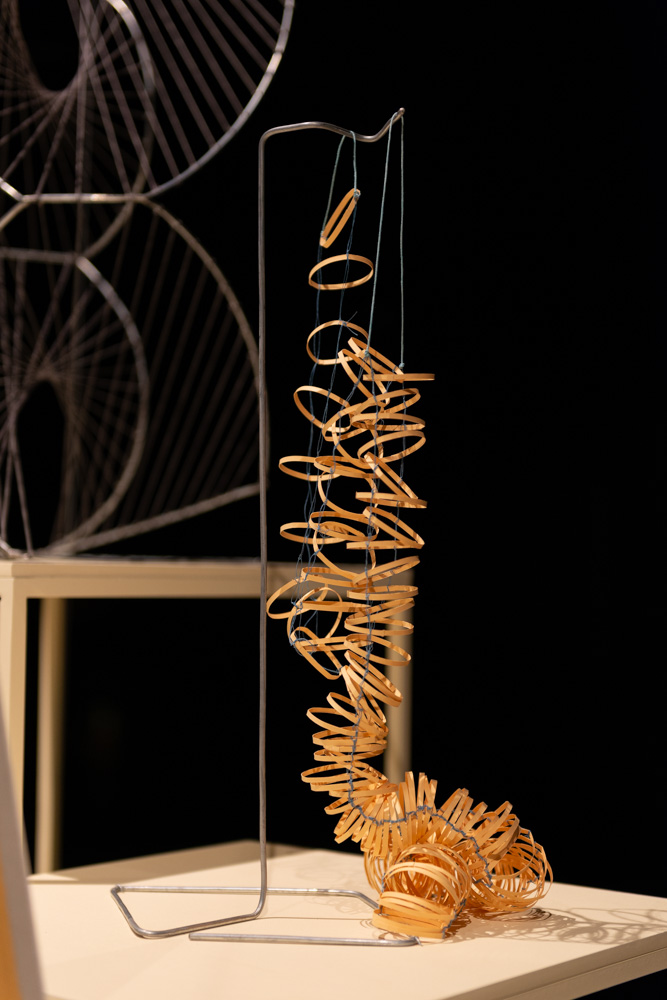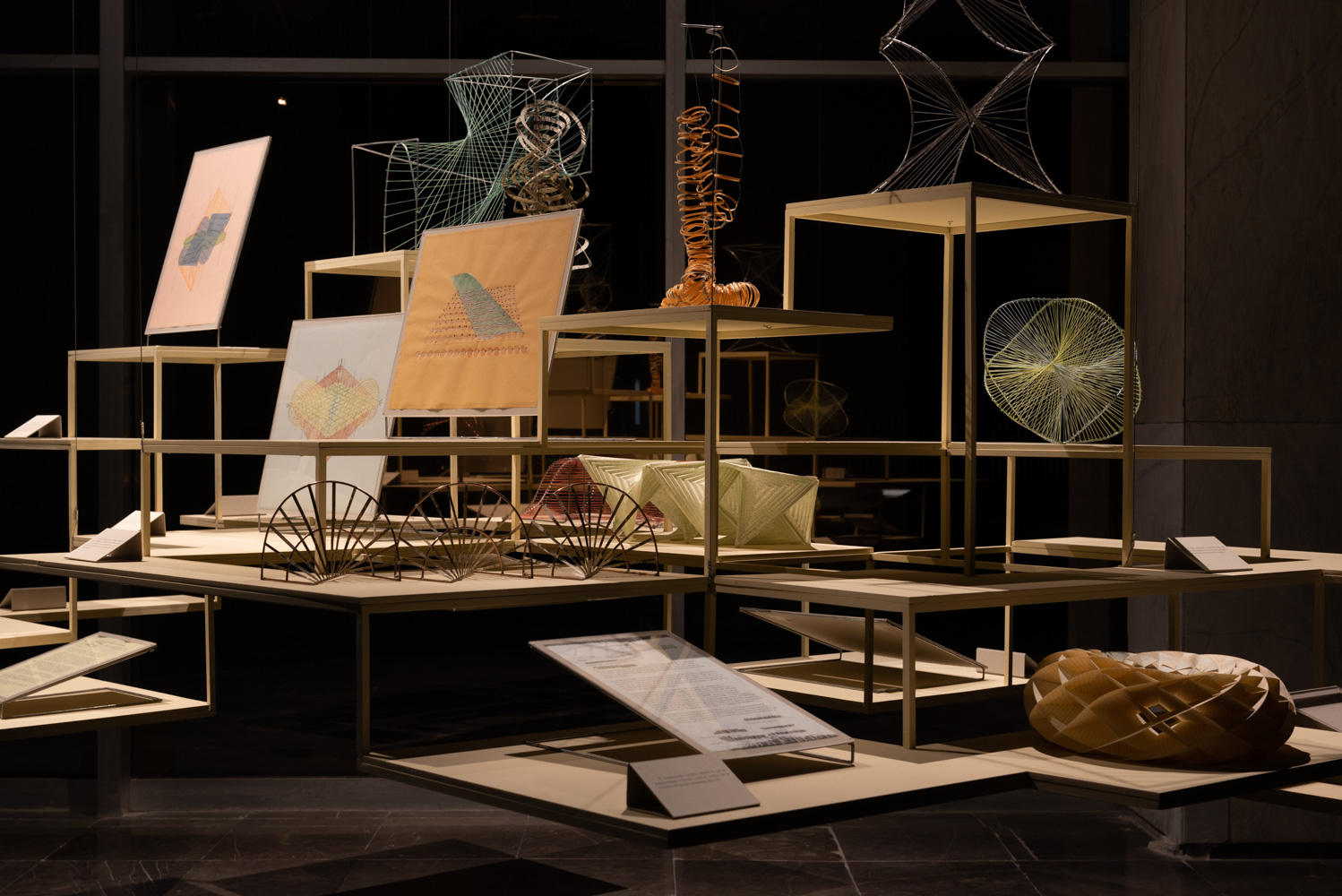THE EURYDICE EXPERIMENT
Employing diagrams, documents, texts, and models, The Eurydice Experiment explores a story of time travel to the past. In this fiction, the Spring Grove Psychiatric Research Center in Maryland developed a drug that gave patients’ access to their memory archive, allowing them to observe events from their personal past.
Through this narrative, Colwell questions our desire to revisit our personal histories, the potential repercussions of revisiting the past, and our conventional understanding of time.
The artwork uses the metaphor of the Greek myth of Eurydice and Orpheus as a way of reflecting upon our cultural aspirations to re-see or re-live the past and the problems of looking backwards.
Digital print, watercolor paint, pencil, Japanese tissue paper, galvanized steel, pages from the book The Pleasure of Ruins, cotton string, cardboard, copper, paper and acrylic paint.
Empleando diagramas, documentos, textos y maquetas, El experimento Eurídice explora una historia de ficción sobre un viaje en el tiempo al pasado. En esta ficción, el Centro de Investigación Psiquiátrica Spring Grove en Maryland desarrolló un experimento llamado Eurídice, en elque creó un medicamento que daba a los pacientes acceso a su archivo de memoria, permitiéndoles observar eventos en su pasado personal.
Con esta historia, Colwell cuestiona el deseo de volver a visitar nuestras historias personales, las repercusiones potenciales de volver al pasado, y nuestro entendimiento convencional del tiempo.
Esta obra de arte usa la metáfora del mito griego de Eurídice y Orfeo como un modo de reflexionar sobre nuestro deseo de volver a ver o revivir el pasado, así como los problemas de mirar hacia atrás.
Impresión digital, pintura acuarela, lápiz, papel de seda japonés, acero galvanizado, páginas del libro El placer de las ruinas, hilo de algodón, cartulina, cobre, papel y pintura acrílica.
